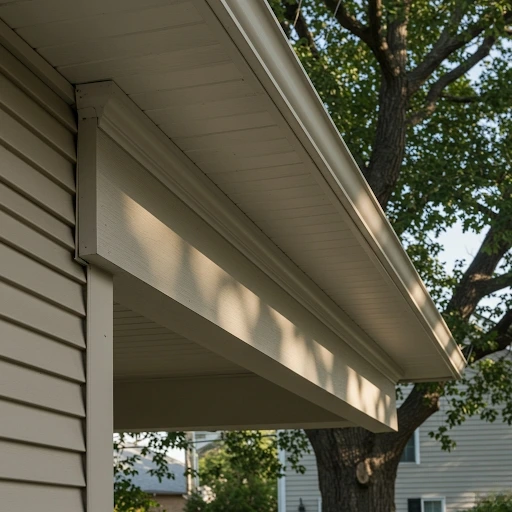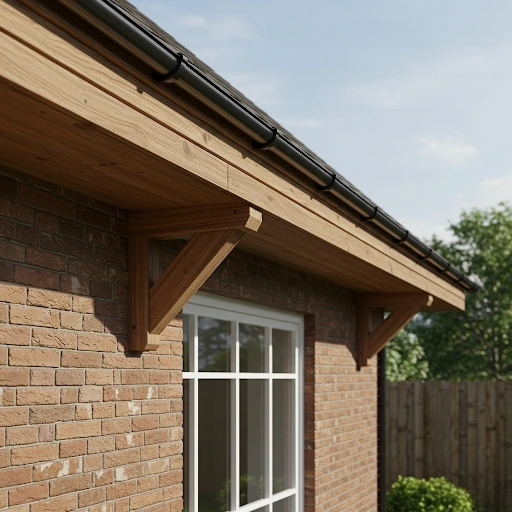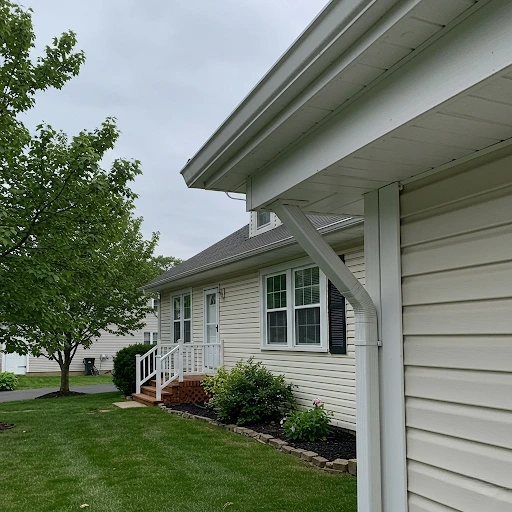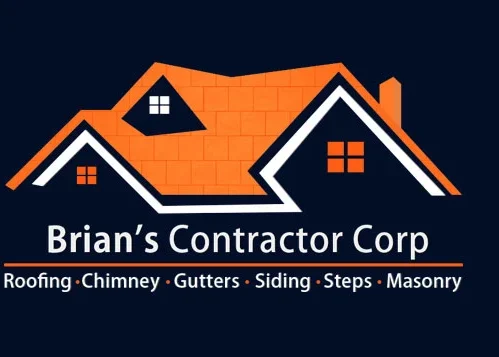
Have you ever noticed that long horizontal board running along the edge of your roof? What Is Fascia on a House? That’s your home’s fascia – a critical component that does far more than just add a finished look to your roofline. For New York homeowners, understanding this essential element can save you thousands in potential repairs and protect your home’s structural integrity.
When we examine homes with water damage or gutter problems, one of the first places we check is the fascia. This often-overlooked component serves as both a protective barrier and structural support for your entire roofing system. Let’s explore what fascia is, why it matters, and how proper maintenance can preserve your New York home’s value and function.
Understanding Your Home’s Fascia Board – Form and Function

What Exactly Is Fascia and Where Is It Located?
The fascia on a house is the straight, long board that runs horizontally along the lower edge of your roof, mounted where the roof meets the outer walls. It serves as the visible finishing edge connected to the ends of the rafters and trusses.
In New York homes, where we experience everything from heavy snow to summer downpours, the fascia acts as a critical first line of defense against the elements. This board works in conjunction with your soffit (the underside material between the fascia and wall) to create a protective barrier system around your home’s perimeter.
Think of fascia as the frame around a picture – it both finishes the edge and provides structural strength to the entire system.
The Critical Roles Fascia Plays in Your Home’s Protection
Your fascia board isn’t just decorative – it performs several vital protective functions for your home:
- Supports the bottom row of roof tiles or shingles
- Provides the mounting surface for your gutter system
- Seals the edge of your roof against water infiltration
- Prevents pest entry into your attic space
- Creates a finished, aesthetically pleasing roofline
During New York’s intense winter storms, your fascia helps bear the weight of ice and snow buildup while protecting the vulnerable edge of your roof from moisture damage. Without properly functioning fascia, water can seep behind your gutters and into your home’s structure, leading to extensive and expensive repairs.
Common Fascia Materials and Options for New York Homes

Traditional vs. Modern Fascia Material Options
The material you choose for your fascia significantly impacts its durability, especially in New York’s variable climate. Here are the primary options we recommend:
Wood Fascia: Traditional and customizable, wood fascia offers classic appeal but requires regular maintenance. Cedar and redwood varieties resist decay better than standard pine, but all wood requires periodic painting or staining to prevent rot in our humid summers and wet winters.
Vinyl and Composite Fascia: These low-maintenance options have become increasingly popular for New York homes. They resist water damage, don’t require painting, and can withstand temperature fluctuations without warping or cracking.
Aluminum Fascia: For maximum durability against New York’s harsh winters, aluminum fascia provides excellent protection. It won’t rot, can be formed to fit any roofline, and stands up to ice buildup without damage. While initially more expensive, its longevity often makes it more economical over time.
Consider this scenario: You own a colonial home in Westchester County with wooden fascia that hasn’t been maintained in 15 years. After several harsh winters, the fascia has begun to rot, allowing water to penetrate behind your gutters and into your roof structure. Replacing this damaged wood fascia with aluminum could prevent thousands in structural repairs while eliminating ongoing maintenance concerns.
Signs Your Fascia Needs Professional Attention
Catching fascia problems early can save you significant money and prevent more extensive damage. Watch for these warning signs that indicate your fascia needs repair:
- Peeling or bubbling paint on the fascia surface
- Visible cracks, splits, or rotting sections
- Sagging or detached gutters
- Water stains on exterior walls below the fascia
- Visible pest activity around your roofline
For New York homes, winter damage inspection is particularly important. After heavy snow and ice events, check your fascia for signs of water infiltration or separation from the roofline. These issues, if left unaddressed, can quickly escalate from simple fascia repairs to major structural problems requiring roof fascia repair or even partial roof replacement.
Maintaining and Protecting Your Home’s Fascia
Essential Fascia Maintenance for New York Weather
Proactive maintenance is always more cost-effective than reactive repairs, especially with critical components like fascia. For New York homeowners, we recommend this seasonal maintenance schedule:
- Spring: Complete a thorough fascia cleaning to remove winter debris and check for winter damage
- Summer: Inspect for pest infestations and repair any paint damage or small cracks
- Fall: Clear gutters completely and ensure all fascia-to-gutter connections are secure
- Winter: Monitor for ice dam formation that could damage fascia boards
Regular fascia cleaning isn’t just about appearances. Removing built-up debris, mold, and mildew prevents moisture retention that can accelerate deterioration. For wood fascia, a gentle cleaning solution of water and mild detergent applied with a soft brush removes debris without damaging the surface.
The freeze-thaw cycles common in New York winters are particularly hard on fascia. Ensuring your gutters remain clear prevents ice dams that force water under your shingles and behind the fascia, causing separation and rot.
Professional Fascia Solutions – Repair and Installation
Sometimes DIY maintenance isn’t enough, and professional fascia service becomes necessary. Here’s when to call the experts:
- Multiple sections show damage or deterioration
- Fascia has separated from the roof structure
- Water has penetrated behind the fascia into structural elements
- Your home needs complete fascia replacement or upgrade
Professional fascia installation ensures proper sealing, secure attachment to roof structures, and appropriate integration with your gutter system. For most homes, a complete fascia replacement takes 1-2 days depending on the property size and material selected.
Your Fascia Questions Answered
What’s the relationship between fascia and soffit on my house?
While fascia runs horizontally along your roofline’s edge, the house fascia soffit system works together as a team. The soffit is the underside material that connects your fascia to the exterior wall, often featuring ventilation to allow proper airflow into your attic. Together, they create a sealed system that protects your roof structure while allowing necessary ventilation.
How frequently should New York homeowners inspect their fascia?
We recommend a minimum of twice-yearly inspections – once in spring after winter stresses and once in fall before winter weather returns. However, after significant storms or extreme weather events, additional inspections can catch problems early.
Can damaged fascia affect my home’s value?
Absolutely. Beyond potential structural issues, damaged fascia negatively impacts curb appeal and sends a red flag to potential buyers about deferred maintenance. Well-maintained fascia, conversely, enhances your home’s appearance and demonstrates proper care of the property.
How long does professional fascia installation typically take?
For most New York homes, complete fascia replacement takes 1-2 days, depending on your home’s size and the material selected. Partial repairs can often be completed in just a few hours.
Protect Your Home’s First Line of Defense
Your home’s fascia serves as both a protective shield and structural support system for your entire roof. By understanding its importance and maintaining it properly, you’re preserving your New York home’s value and preventing costly damage.
Whether you need routine fascia cleaning, targeted roof fascia repair, or complete fascia installation, addressing issues promptly saves money and protects your home. We’ve helped thousands of New York homeowners maintain this critical component through harsh winters and scorching summers.
Don’t wait until water damage appears inside your home. Inspect your fascia today and reach out to our experienced team for professional assessment and solutions tailored to your specific needs.


